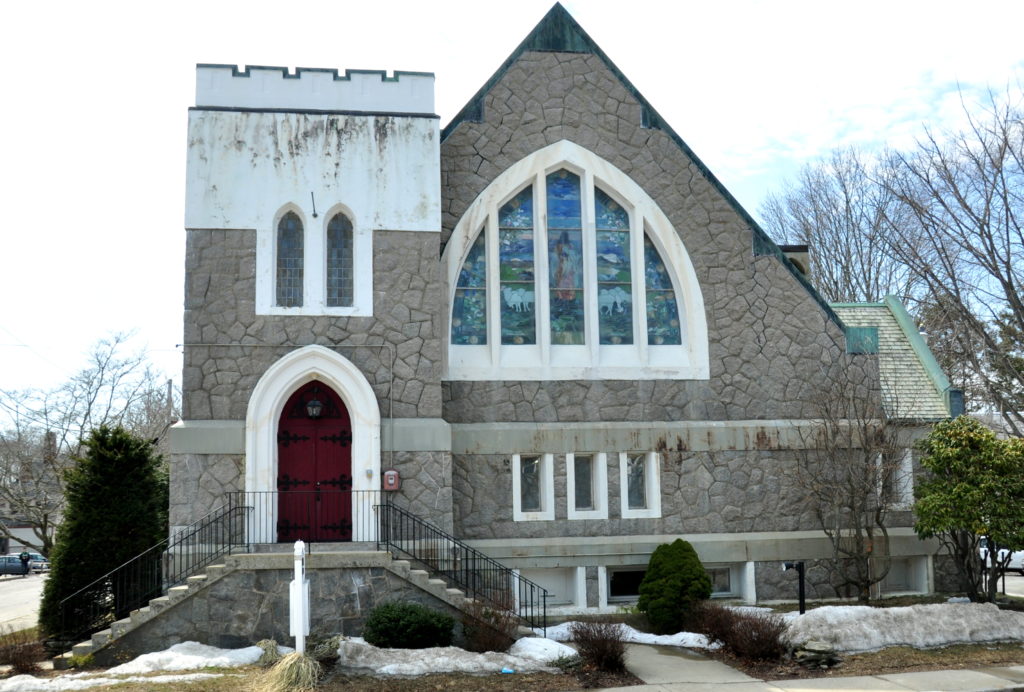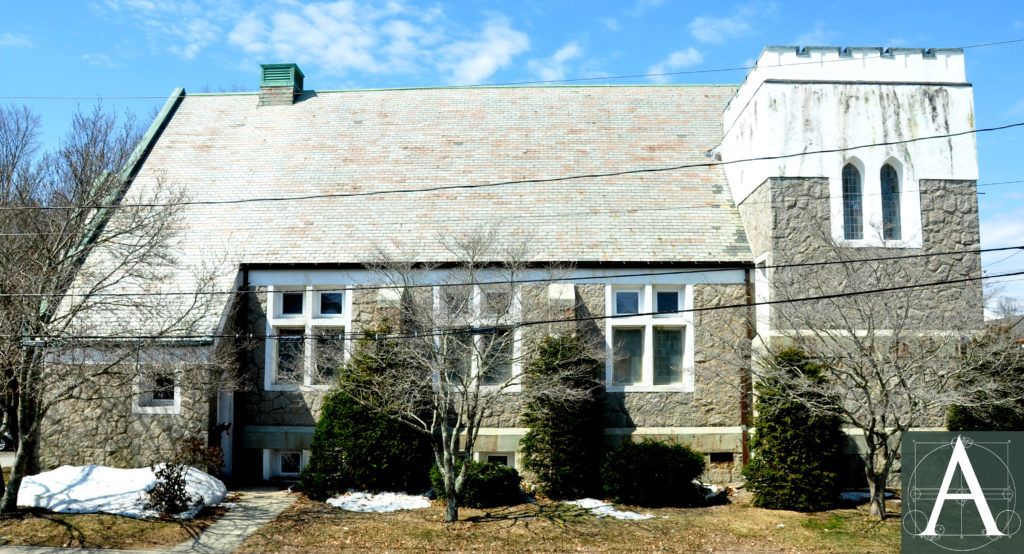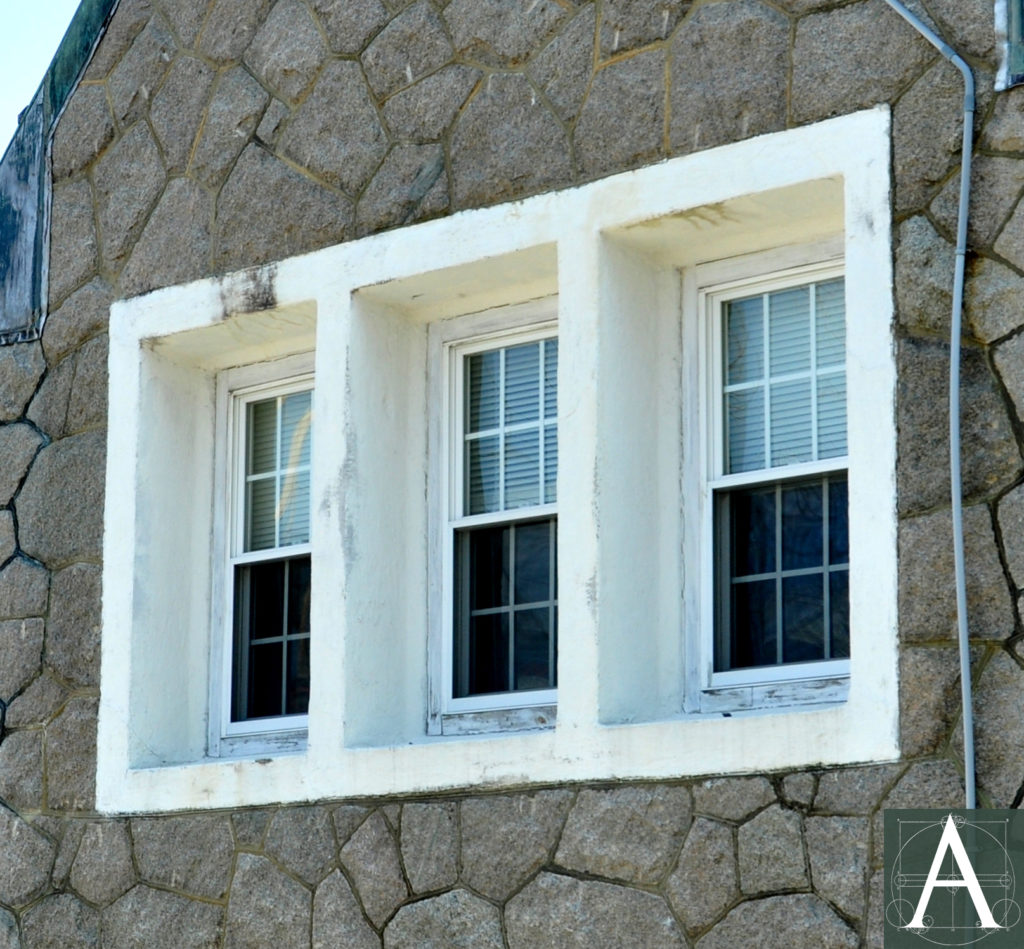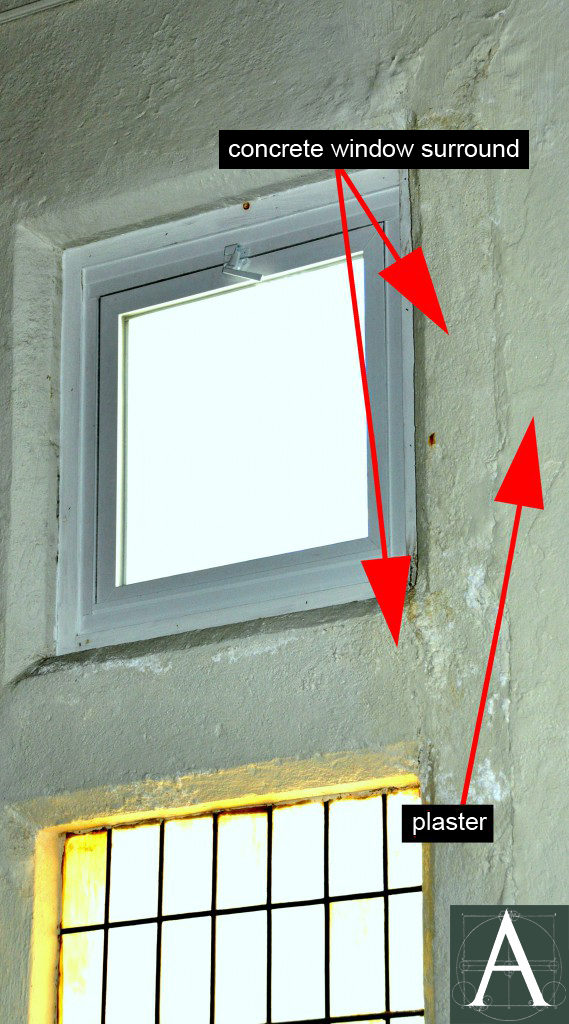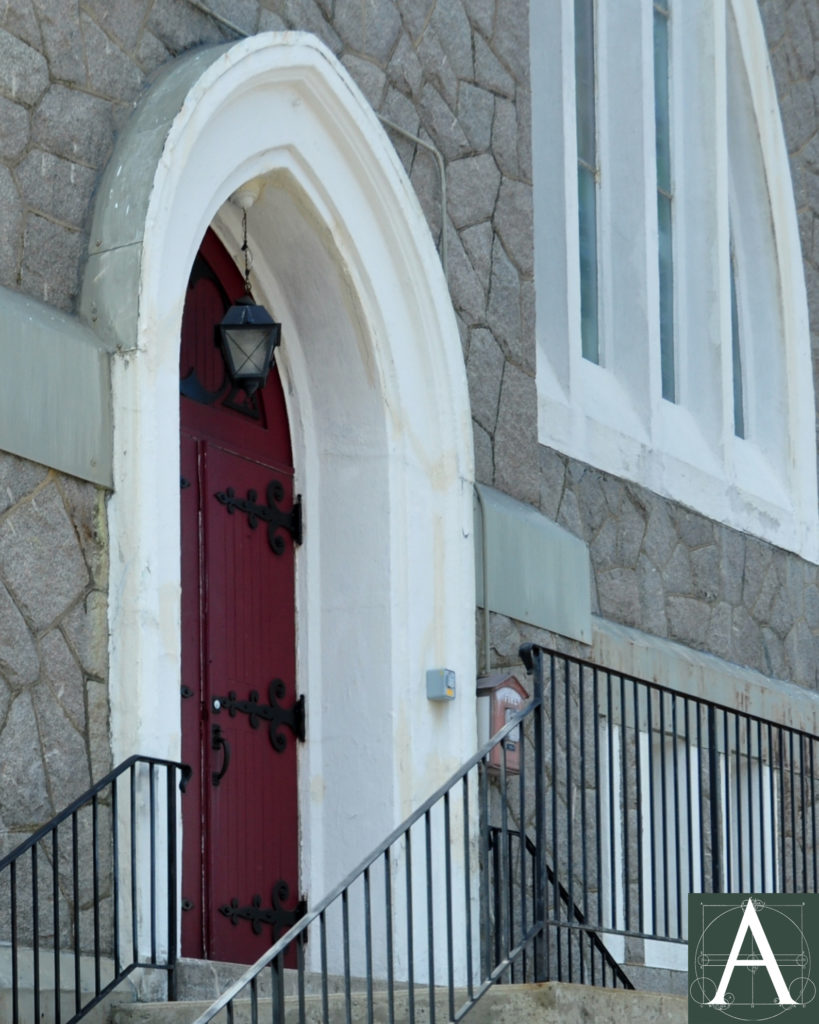Notable Elements
- early non-industrial use of concrete for bearing walls and ornamental trimmings [History]
History
The Gammons Memorial Church was constructed as the second church hall of Bridgewater’s first Methodist congregation. The congregation was founded by Annie Lawrence following her to conversion to Methodism at a revival meeting in Raynham, Massachusetts. In 1874, Lawrence raised pledges and established the new congregation, which leased a former Swedenborgian church adjacent to this site and adapted it for their use. Shortly after the church’s establishment, Lawrence was married to Ferdinand Gammons, later Vice President Manager of a cotton gin manufacturing company in Bridgewater. The couple continued to be major supporters of the congregation, and, in 1913, purchased an adjacent lot on which they built the present Methodist Church building, which was dedicated on June 10, 1914. Since its dedication, the church has remained in use by the same religious congregation.
Built in 1913-1914 from designs by architect R. T. C. Jackson (probably Robert T. C. Jackson of Fall River, Mass., and New York), the Gammons Memorial Church is a late Gothic Revival-style church building constructed of poured/cast concrete and faced with a stone veneer. Wall conditions are indicated on two original blueprints that remain in the Church’s possession, showing the basement and first-floor plans. These plans are not entirely accurate as their graphics indicate that the foundation is constructed of concrete; whereas visible portions of the foundation’s interior are constructed of mortared rubble stone below grade. Similarly, first-floor walls are shown as poured concrete extending to the finished wall surface on the interior and clad with a stone veneer at the exterior; actual conditions include interior wall finishes of plaster set on lath and strapping, which seems likely to be attached to a concrete or masonry core with nailing strips embedded in the concrete/masonry core. These conditions are surmised by surface examination and should be confirmed through more detailed examination.
The building’s exterior Gothic-style trimmings in the form of water tables, belt-courses, window surrounds and door cases all appear to be monolithic pieces of concrete, perhaps cast in place. They bear relatively smooth surfaces free of form marks, but none of them displays the careful, intentional finishes achieved by cast-stone in this period. Each of these elements extends from the exterior surface of the building through to the interior finished surfaces. Extensive deterioration of the water table and other horizontal elements has been concealed by a protective metal cladding added in the last twenty years. Sections of the cladding have been loosened, probably by the pressure of ice jacking or the pressure of the concrete as it expands in deterioration. In these locations, crumbling sections of concrete reveal a coarse aggregate and relatively soft mixture of concrete. No reinforcement bars are visible, but the depth of crumbling may be insufficient to reveal them. Given that this building represents a relatively early use of concrete for a non-industrial building, the builder and architect may have been unfamiliar with specifying and handling the material. Without having the opportunity to open sections of the wall, it is not possible to determine how much of the wall’s core was cast-in-place concrete and whether that casting was integrated with the casting of window and door surrounds.
A search of online architectural sources including the MACRIS system of the Massachusetts Historical Commission, New York Times obituaries, and Withey’s Biographical Dictionary of American Architects, Deceased, produced no biographical information regarding R. T. C. Jackson, his architectural practice or other buildings designed by him with the sole exception of the Lakeville Public Library, 241 Main Street, Lakeville, Massachusetts. Built at the same time as the Gammons Memorial Church, the Lakeville Public Library appears to be constructed of a similar mixture of poured concrete and stone with late Gothic Revival-style details.
Date
1913-14
Builder/Architect
Robert T. C. Jackson, architect
Building Type
Church
Foundation
The foundation is made of rubble stone laid in mortar (composition unidentified) below grade. Above grade, the foundation is made of poured concrete faced with random granite rubble.
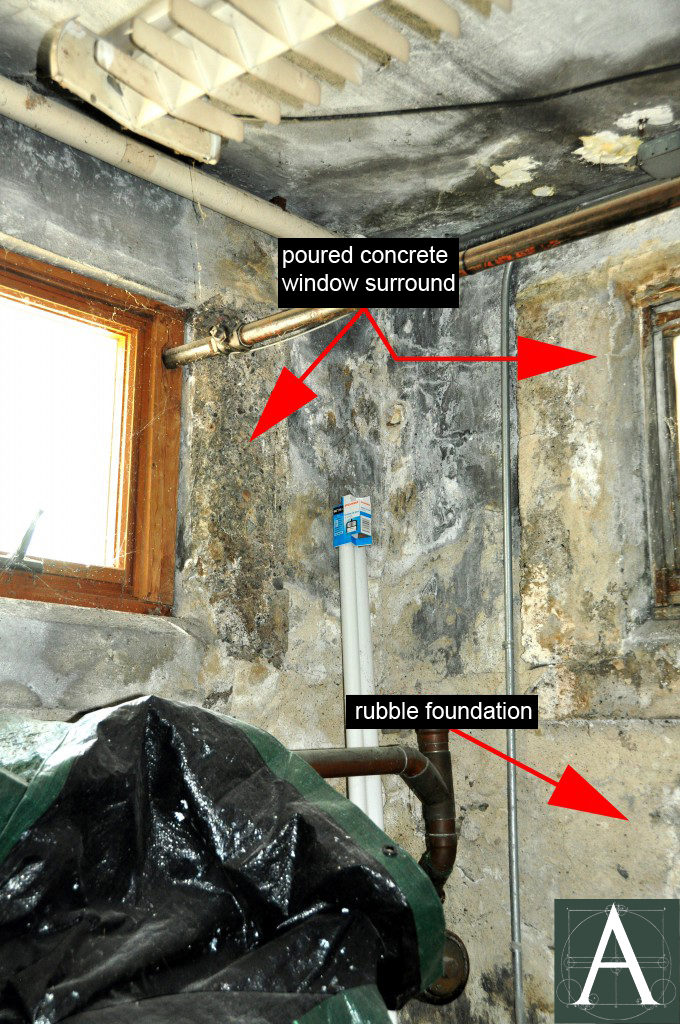
detail of foundation wall at interior showing rubble foundation construction below grade and concrete window frame above grade
Frame
Plans indicate that the cores of exterior walls are poured concrete; however, this material has not been confirmed by physical examination. Wood framing is visible at the main roof and within the building; steel may also have been used in the structure, although its presence has not been confirmed by examination.
Exterior
The building’s exterior is clad with random granite rubble veneer. Unique elements consist of the massive concrete window and door surrounds, which appear to be monolithic and, possibly, poured in place. These surrounds extend the full depth of the wall spanning the exterior weathering surfaces to the interior finished surfaces.
The method by which the church’s tower was built is unconfirmed by physical examination, as the tower contains no interior access to its roof. It is likely that the core of the wall is poured concrete with stone veneer on the exterior and plaster on the interior; however, the upper portions of the wall with a crenellated parapet at the roof are covered with render that may be cement-based. Extensive algae and mold on the face of the render suggest that the parapet traps water. On three elevations, the tower has patched circular holes near the base of its walls where downspouts originally drained rainwater from the tower roof. This system has been removed, and it is unclear how rainwater drains from the tower at present.
Roof
The main body of the church and its side wings are covered with pitched roofs. Roofs are clad with slate and flashed with copper. The tower roof is not visible from the street, but is probably a low hip pitching toward the corners where the existence of original drains is suggested by plugged circular pipes at the southwest, southeast and northeast corners of the tower’s base. The tower roof is completely surrounded by a crenelated parapet with no apparent means of drainage at present.
The building is served by a single chimney set in the corner between the north wall of the church hall and the west wall of the church office, which is set in a one-storey projection at the façade. The chimney appears be constructed of concrete faced with random rubble granite surmounted by a cast-concrete cap with pointed-arch openings at the top of each flue. On the interior, the chimney serves the furnace in a boiler room beneath the church office and a wood-burning fireplace faced with finely pressed and moulded brick in the church office.
Interior
Interior finishes appear to be plaster set on lath attached to wooden sleepers embedded in poured concrete wall (unconfirmed – the core of the wall has not been opened for examination); concrete surrounds are exposed at windows.
Contributor
Brian Pfeiffer, architectural historian
Sources
Massachusetts Historical Commission: Gammons Memorial Church MHC Inventory; Lakeville Public Library
Unpublished preliminary conditions assessment conducted by Brian Pfeiffer 2015.

